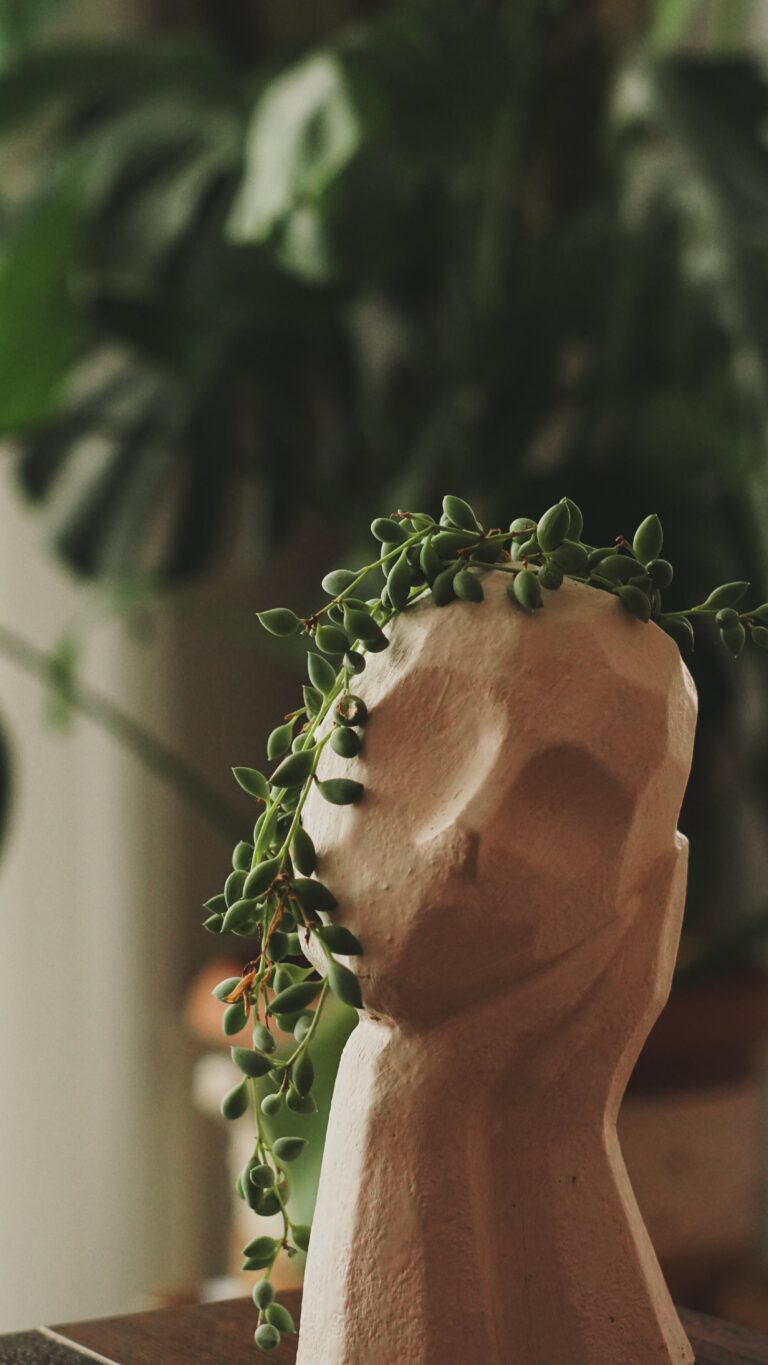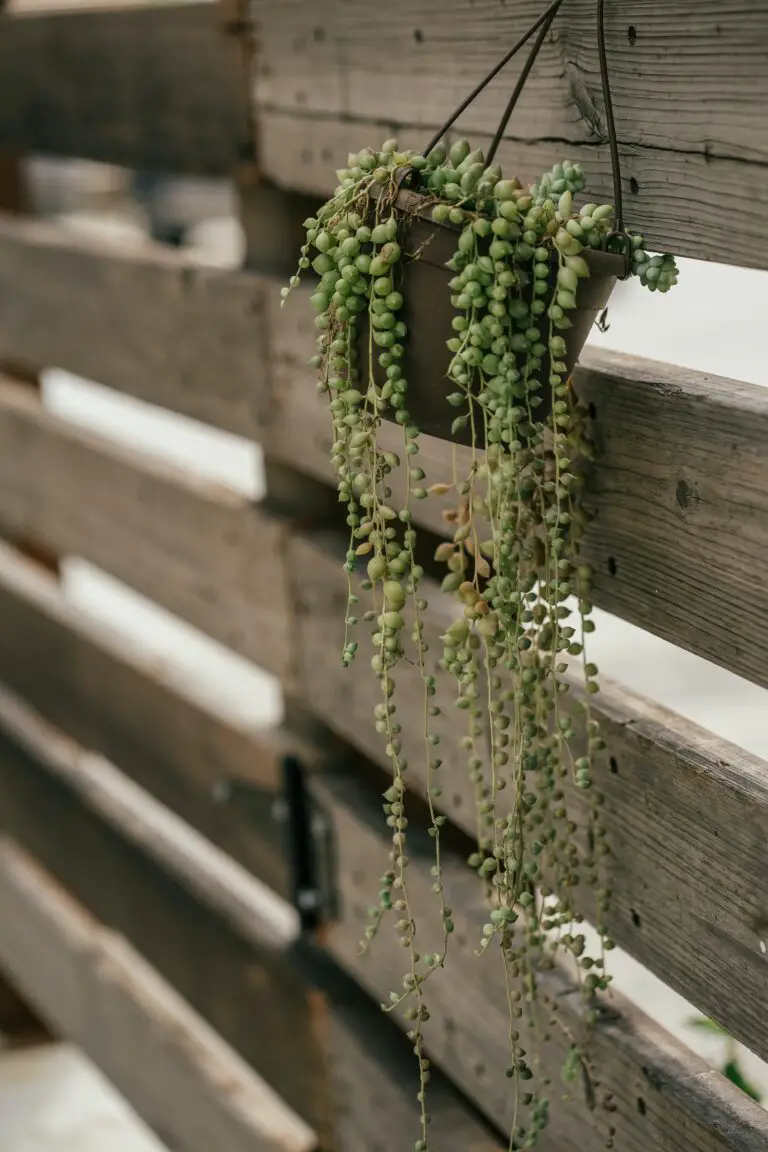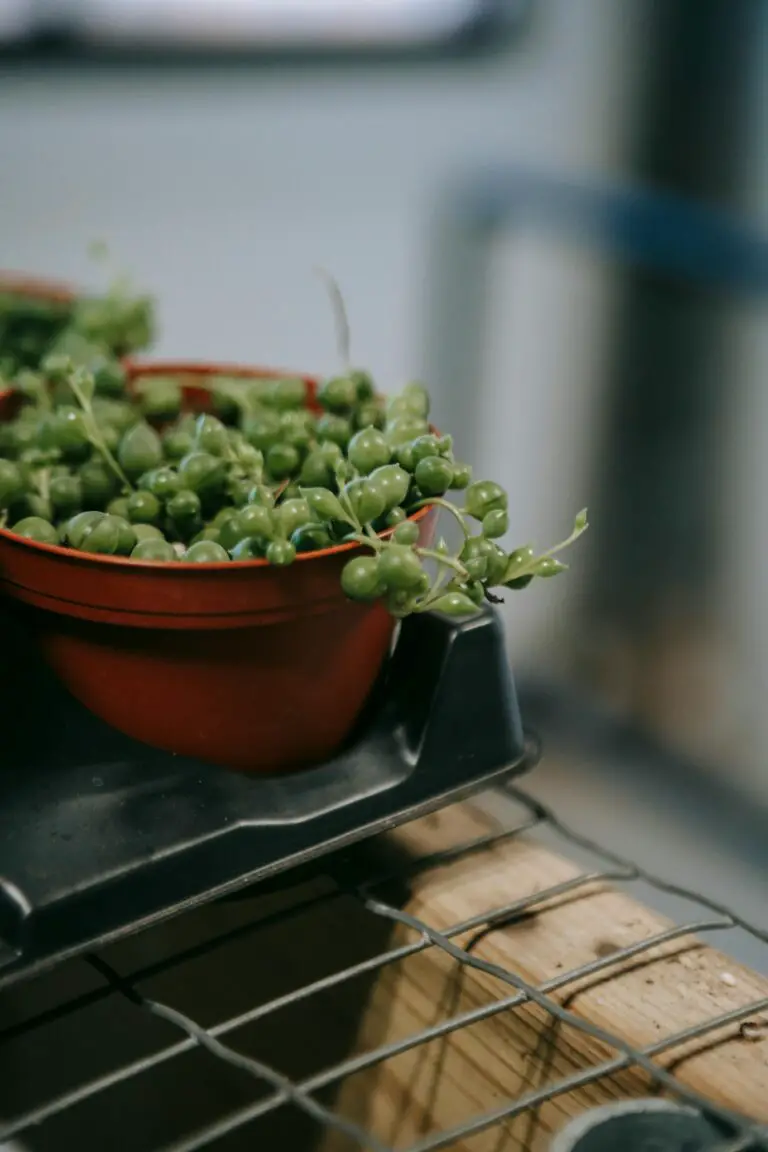Introduction to Senecio Mikanioides
Discover the enchanting world of Senecio Mikanioides, also known as German Ivy or Cape Ivy. This lush vine has captivated the hearts of plant enthusiasts with its versatile charm and ease of care. As we unravel the allure of this botanical gem, imagine a verdant cascade spilling gracefully from hanging baskets or climbing a trellis, bringing a touch of wilderness into our urban abodes.
Originating from the coastal regions of South Africa, Senecio Mikanioides boasts a hearty, adventurous spirit, much like the explorers of its native lands. Its distinct heart-shaped leaves are a glossy green, etched with delicate veins that hint at a deep, underlying resilience.Embedded within these leaves is the essence of versatility – whether basking in the full sun or nestled in the dappled shade, the German Ivy thrives with an almost whimsical adaptability.
Why do plant lovers gravitate towards this perennial viner? Perhaps it is the effortless way it adds a splash of evergreen vibrancy to any environment. Or maybe it’s its forgiving nature, allowing even those with a less-than-green thumb to experience the joy of successful cultivation. The visual appeal of robust trails of foliage, often seen in chic cafes or sprawling across the walls of trendy lofts, is undeniable.
Let’s not just read about it, but also take a visual dive into the world of Senecio Mikanioides! Here’s a glimpse into the effective removal of Cape Ivy in its native habitat – a testament to its vigor and the importance of managing its growth responsibly.
In our urban jungles, Senecio Mikanioides becomes more than just a plant; it is a statement of life and growth, a green symbol of adaptation and survival. Embrace the lush trail of greenery it offers, and you’ll discover the charm and beauty that lies within each of its climbing tendrils and spreading leaves. It’s not just about cultivating a plant; it’s about fostering a living piece of art.
History and Botanical Profile
Have you ever stumbled upon a cascade of lush green leaves, intricately tangled, and felt an instant pull towards its natural beauty? If so, you might have been admiring the splendid Senecio mikanioides. This charming plant, with its story deeply rooted in the heart of the botanical world, has been a source of fascination and delight since its discovery.

Originating from the majestic landscapes of South Africa, Senecio mikanioides quickly claimed its prominence within horticulture for its vibrant green foliage and its remarkable ability to adapt. The plant’s journey from the wilds of the Drakensberg Mountains to domestic gardens represents a testament to its resilience and decorative appeal. Its scientific classification places it within the diverse Senecio genus, a testament to nature’s incredible variation.
While it’s often admired for its aesthetic qualities, the history of Senecio mikanioides unfolds a narrative of exploration and cultural exchange. Botanists who categorize the wonders of the flora world have diligently documented its characteristics, contributing to our extensive knowledge of plant biodiversity.
For enthusiasts seeking to refine their collection of verdant wonders, considering the addition of Senecio mikanioides is a step towards creating a trail of greenery that’s both picturesque and steeped in history. Discover more about how to nurture your own garden gems and ensure they thrive under your care, just like the mesmerizing trails of the Senecio mikanioides.
Ideal Growth Conditions and Propagation
Are you looking to indulge in the vining elegance of Senecio Mikanioides, also known as the Cape Ivy? Delight in the verdant tapestry this plant weaves across your space, as you master the essentials of its care. Here’s a sneak peek into curating an oasis for your own slice of green wonder.
Light: A Shimmer of Sunshine
Imagine the dappled light of a forest understory – that’s what Senecio Mikanioides calls home. To mimic these conditions, find a spot where bright, indirect light bathes the foliage, sparing it from the wrath of the midday sun. A north-facing window or a shaded patio can be the perfect stage for this green performer, allowing it to flaunt its cascading foliage without the fear of scorching.
Soil: The Foundation of Flourish
Just as a painter needs a prime canvas, Senecio Mikanioides needs the right soil blend to thrive. Opt for a well-draining mix that is light and airy, akin to a forest floor rich with decayed leaves. A combination of peat, perlite, and potting soil could be the trinity that ushers in a crescendo of growth. For those yearning for convenience, a quality succulent mix available at our guide to succulent soil could be the perfect understudy.
Temperature: The Warm Embrace
Envision the warm, temperate breezes where Senecio Mikanioides flourishes. Your green amigo prefers the same cozy conditions, with temperatures hovering between 60-80°F (15-26°C). Guard it from the chills, as cold drafts and frost are the nemeses that can stunt its zest for life.
Propagating New Prodigies
The magic of propagation is that anyone can become a plant artisan. With a snip here and a plant there, you can multiply your mikanioides marvel. Choose healthy stems, make a clean cut, and introduce them to a moist soil mix. The thrill when those little roots peek through is akin to cheering on your favorite understudy taking the spotlight. Patience here, though, is as essential as water to a fish – give your new plantings time to anchor and grow.

By offering a habitat inspired by its native one, Senecio Mikanioides will reward you with its lush, trailing greenery, blooming into an green haven. Care for it with tenderness and foresight, and watch as your space transforms into a living tapestry, stitched with the threads of Mother Nature herself.
Plant Care Essentials
When it comes to nurturing your Senecio Mikanioides, think of it as a friend with specific preferences. Proper care ensures it thrives, transforming your space with a cascade of lush, vibrant greenery. So, let’s dive into the care practices that make all the difference.
Consistent Watering: Finding the Sweet Spot
Imagine you’ve just finished a long hike; your Senecio Mikanioides feels the same way about a good watering! But beware, too much love can lead to soggy roots. Give it a thorough drink only when the top inch of the soil feels dry. It’s all about balance, ensuring your plant stays hydrated without the risk of waterlogged roots.
Fertilizing: The Buffet of Nutrients
Think of fertilizer as a gourmet buffet for your plant. It loves to feast but doesn’t overindulge. A balanced, water-soluble fertilizer offered quarterly fuels its growth without overwhelming it. It’s like a sprinkle of magic that keeps the leaves lush and the trail of greenery robust.

Pruning: Sculpting the Perfect Shape
Sometimes, a little trim can lead to a big transformation. That’s the case with this cascading wonder. Removing dead or yellow leaves not only beautifies the plant but also encourages new growth. Think of it as giving your plant a new haircut, shaping it up to look its best and encouraging fresh, green shoots to take center stage.
Pest Control: Keeping the Critters at Bay
Despite its charm, Senecio Mikanioides isn’t immune to the occasional pest party. The usual suspects—aphids and mealybugs—love to crash the scene. Keep these uninvited guests in check with neem oil or insecticidal soap. Regular inspection is like setting up a neighborhood watch for your plants, ensuring pests don’t make themselves at home among the leaves.
Every helping hand you give your Senecio Mikanioides paves the way for long-lasting health and verdancy. And while you’re at it, check out tips on succulent care to become an even more skilled plant whisperer. Your green friends will thank you, and your indoor oasis will become the envy of plant lovers far and wide.
Designing with Senecio Mikanioides
Envision the lush curtains of greenery that Senecio Mikanioides, also known as the Cape Ivy, drapes over its surroundings, transforming bland spaces into vibrant tapestries of life. The versatility of this robust plant makes it a favorite for amateur and seasoned plant enthusiasts alike. Let’s discover how to weave this living art into the fabric of our homes and lives!
Hanging Baskets: Cascades of Green
Imagine the serene beauty of Senecio Mikanioides as it spills out of hanging baskets, a literal overflow of nature’s opulence. Suspended in mid-air, these baskets bring a breath of fresh air to any corner, offering a visual feast that elevates the spirit. The gentle sway of the tendrils in a soft breeze infuses a sense of calm, making them perfect for sun-drenched nooks or quiet reading spots.
Ground Cover: A Carpet of Nature
Ground cover does not need to be mundane. Senecio Mikanioides, with its creeping habit, is an exceptional alternative to the traditional lawn. Picture it blanketing the earth in verdant splendor, a live mosaic underfoot that demands little and gives so much. It’s a living, breathing groundcloth that outshines gravel or wood chips and thrives in the shaded understories where sunlight is a treasured guest.
Complementing Companions: A Symphony of Houseplants
Pair Senecio Mikanioides with other houseplants for a symphony of textures and shades. This dynamic groundling gets along famously with lofty ferns, the waxy leaves of a Ficus, or the stark lines of a Snake Plant. In such company, it is more than a plant; it becomes part of an ensemble, each member enhancing the other, creating a collective that is harmonious and visually stunning.
Whether you integrate it as an understated backdrop or let it steal the spotlight, Senecio Mikanioides adapts to your vision with grace. Its low-maintenance nature makes it the perfect candidate for busy lives seeking a touch of evergreen without the fuss.

Dive into the exploration of Senecio Mikanioides and let your creativity lead the way. It’s more than just a plant; it’s an invitation to design, to create, and to enliven your space with nature’s most beautiful patterns.
Managing Invasive Tendencies
While the lush, vining foliage of Senecio Mikanioides, often adored for its ornamental allure, can quickly turn a bare trellis or wall into a verdant masterpiece, its vigorous growth habit hides a tenacious character that can take a dark turn in certain environments. This trait has earned it the reputation of being an invasive species in some regions, outcompeting native flora and altering ecosystems. Let’s unravel the challenge of fostering Senecio Mikanioides responsibly, ensuring our green endeavors remain both beautiful and beneficial.
Tread Carefully: The first step to responsible cultivation is recognizing if you’re in an area where Senecio Mikanioides is deemed invasive. Check with local environmental agencies or extension services, who can advise on the suitability of planting this species in your locale. If it’s a green light, exercising diligence in containment will protect your surrounding ecological paradise. Implement barriers, such as surrounding edges or planter boxes, to restrict its wandering tendencies and routinely prune its exploratory shoots.

Containment is King: Creative gardeners have found success in hanging planters, where the trailing nature of Senecio Mikanioides is displayed artistically without letting it creep into unwanted territories. By suspending its growth, literally, you allow for vertical dazzle without horizontal hassle. Additionally, frequent trimming ensures its footprint remains within your purview. One such example is a living curtain on a balcony, where trimmed tendrils cascade just enough to turn heads without overstepping their bounds.
Love Thy Neighbour: For those with a fondness for native flora and an eye towards ecological harmony, considering native alternatives with similar aesthetics might be your best bet. By cultivating regional plants that offer comparable texture or form, you not only enrich local biodiversity but might also discover unique species that resonate with your gardening ethos. For instance, in some coastal areas, opting for native climbing or trailing plants can offer an eco-friendly substitution that embraces both local wildlife and your garden vision.
Ultimately, the key to enjoying Senecio Mikanioides without ecological remorse lies in informed, proactive stewardship. By acknowledging its invasive potential and harnessing its growth with strategic cultivation techniques, we can continue to revel in its lush greenery, consciously intertwining human artistry with nature’s tapestry.
Senecio Mikanioides and Pet Safety
Your home is a sanctuary not just for you, but for your furry family members as well. As you embark on cultivating Senecio Mikanioides—a verdant vine with heart-shaped leaves that cascade with cheerful abandon—it’s crucial to consider the safety of your pets. The lush greenery of this plant can be incredibly tempting for a curious cat or a playful pup, but behind its beauty, it conceals a toxin that could pose a threat to their well-being.
Often known as the variegated wax vine, Senecio Mikanioides can liven up any space with its trailing tendrils. Yet, if Fluffy or Fido decides this greenery makes for a tasty snack, they could be in for an unwelcome surprise. This plant contains pyrrolizidine alkaloids—compounds that are toxic if ingested, leading to symptoms such as lethargy, vomiting, diarrhea, and in severe cases, liver failure.
To keep these scenarios from becoming a reality, it’s wise to hang your Senecio Mikanioides high out of pets’ reach. Imagine the vine cascading from a lofty shelf or dangling elegantly from a ceiling hook. These positioning strategies not only enhance the aesthetics of your sanctuary but also form an effective barrier between your pets and the plant.
Let’s say your clever cat still manages to orchestra a gravity-defying leap towards the vine. It’s then critical to have a backup plan. Creating deterrents can be as simple as sprinkling some citrus peel around the base of the plant, which most felines dislike, or using a pet-safe bitter spray on the leaves. Real-life examples abound of pet owners who have turned their home into an indoor jungle while successfully keeping their animals safe and sound.

If preventative measures fail, and your pet does come into contact with Senecio Mikanioides, swift action is imperative. Remove any plant matter from their mouth if possible, and watch for symptoms. A call to your veterinarian should always be your first response, coupled with a possible visit to the clinic if they advise it.
Being a responsible plant parent means not only looking after the Senecio Mikanioides’ shiny leaves and ensuring they unfurl to their fullest potential but also safeguarding the well-being of your animal companions. With a bit of vigilance and strategic placement, you can revel in the wonder of this botanical gem and share a peaceful coexistence with your beloved pets.
Senecio Mikanioides and Pet Safety
Heads up, pet parents! If you’re enamored by the captivating tendrils of Senecio Mikanioides, also known as the variegated wax vine, there’s a crucial catch to consider: it’s not as pet-friendly as its delectable leaves might suggest. While it can cascade elegantly over bookshelves and bring a room to life, it harbors a hidden danger to our four-legged friends.
What’s the danger, you ask? Senecio Mikanioides contains pyrrolizidine alkaloids, which are no allies to our pets. When ingested, these compounds can cause a raft of distressing symptoms in cats and dogs, including vomiting, drooling, and in serious cases, liver damage. So, it’s paramount to protect your pets from the potential risks this vine presents.
But how? Here’s a pro tip: Place your Senecio Mikanioides out of paws’ reach. Think hanging baskets swinging from the ceiling or high shelves—spots that are a safe zone from curious sniffers and nibblers. It’s like setting the stage: your plant gets the spotlight it deserves while your animals roam safely below.
Imagine Charlie, your spunky terrier, eyes the plant like it’s his next chew toy. Cue the savvy plant owner who has sprinkled pepper around the pot or applied a spritz of pet-safe repellent. These little hacks can make a big difference in keeping both your greenery and your pets in check.

Oops! Rover got a leaf in his mouth? Don’t fret—remove it gently, and keep an eye out for any unusual behavior. And if you’re uncertain, it’s never overreacting to ring up your vet for a chat. They’re the experts on plant-pet politics, after all. Your swift action can ensure the problem doesn’t branch out into something more serious.
Ultimately, it’s the blend of vigilance and creativity that lets you cultivate Senecio Mikanioides while cherishing the uninhibited joy your pets bring to your life. With a dash of precaution and a sprinkle of love, you can have the best of both worlds—a lush, green companion and a safe haven for your furry family.
Troubleshooting Common Issues
Alarm bells ring for Senecio Mikanioides enthusiasts when their green cascade starts to wilt. Recognize these SOS calls by your foliage friend with our savvy troubleshooting guide.
Yellowing Leaves: The Chlorophyll Culprit
Imagine the sun-kissed leaves of your Senecio Mikanioides losing their vibrant hue, turning a sickly yellow. Sounds like a nightmare, right? Often, it’s a sign that your plant isn’t getting enough water or that the drainage is poor, leading to a variety of deficiencies. But don’t fret! Ensure a quick fix by regulating your watering schedule and checking for a well-draining soil mix that’s like a comfy bed for your plant’s roots.
Leggy Growth: A Stretch for the Sun
When your Senecio Mikanioides starts resembling a gangly teenager in a growth spurt, it’s reaching out for more light. It’s never quite content, always vying for those golden rays. Redirect this quest for sunlight by moving your plant closer to a window or introducing a grow light to cheer up those stretching stems.
Soggy Roots and Thirsty Leaves: The Water Dilemma
Overwatering can leave your Senecio Mikanioides with soggy feet, a surefire way to unhappy plant vibes. Conversely, underwatering leads to parched leaves whispering for hydration. The key is to find the sweet spot – watering just enough to feel the soil’s moisture at your fingertips but not oversaturated. Listen to the leaves; they’ll tell you if you’ve poured a bit too much love into your watering can!

Acting as a plant detective can be exciting, albeit a bit bewildering at times. Yet, by tackling these common growing pains with the care and attention they demand, you’ll witness your Senecio Mikanioides thrive. It’s all about getting into the green groove and speaking the secret language of your lush trail of greenery. Remember, every plant tells a story, and it’s your job to listen and nurture.
Conservation and Ethical Considerations
As stewards of our planet, it’s critical to consider our impact on the environment when cultivating plants like Senecio mikanioides. This vibrant creeper, with its lush, heart-shaped leaves, may add tropical allure to your garden, but its proliferation demands a thoughtful approach. Let’s dive into the ethical grey areas and conservation efforts surrounding this plant.
The Ecological Footprint of Cultivating Senecio Mikanioides
Introducing Senecio mikanioides into non-native environments can be a double-edged sword. On the one hand, it’s a horticulturist’s dream for creating dense green canopies; on the other, it can join the ranks of invasive species, choking out local flora and disrupting ecosystems. For example, in California, Senecio mikanioides has spread beyond gardens, affecting native species and habitats. Gardeners must balance the beauty of this species with responsible cultivation practices.
Preserving Biodiversity
Preserving biodiversity is a crucial part of environmental conservation. Initiatives such as seed banks and native plant societies aim to protect indigenous species against the encroaching threat of invasives like Senecio mikanioides. By choosing to plant native alternatives or controlling the spread of non-native plants, gardeners can play a part in maintaining ecological harmony.
Combating Invasive Species
Active efforts are necessary to combat the spread of invasive species. Organizations worldwide, like the Invasive Species Council, work tirelessly to educate the public and implement strategies to control invasive populations. In regions where Senecio mikanioides threatens local ecosystems, these bodies often spearhead removal projects, highlighting the need for vigilance in our gardening choices.
Incorporating these considerations into our gardening practices ensures that our passion for horticulture contributes positively to the planet’s well-being. By choosing to cultivate Senecio mikanioides ethically and responsibly, we can enjoy its verdant charm without compromising the ecological integrity of our surroundings.
For a more in-depth understanding of the importance of controlling invasive species like Senecio mikanioides, watch this informative video:
Frequently Asked Questions
Are you a green thumb enthusiast eager to weave a verdant tapestry with Senecio Mikanioides, or perhaps a budding gardener intrigued by its luxurious trail of greenery? Dive into this trove of wisdom where we address your curiosities and confusions, guiding you to cultivate your slice of paradise with ease!
What are the ideal conditions for Senecio Mikanioides to thrive?
Imagine a basking, lazy lizard in the mild afternoon sun—that’s the setting your Senecio Mikanioides yearns for! Bright, indirect light is its best friend, and while it can tolerate partial shade, too much shadow will make it lanky and less vibrant. Just like us avoiding a bitter chill, keep it away from freezing temperatures to see it flourish.
How often should I water my Senecio Mikanioides?
Think of your watering can as a pour of love—just enough to keep the soil moist but never drenched. Overwatering is the nemesis of Senecio Mikanioides, leading to soggy roots and sorrowful leaves. Wait for the topsoil to dry out between waterings, and you’ll witness a cascade of green jubilance, unfurling leaf by leaf.
Can Senecio Mikanioides grow indoors?
Affirmative, plant pioneer! Within the comfort of your abode, this green sprite can climb and adorn your space with ease. However, remember to bestow it with adequate light and a cozy corner to mimic its natural habitat. It’s a bit of a social butterfly, loving the company of other indoor plants, creating a mini-ecosystem right in your living room!
What are the signs of a happy Senecio Mikanioides?
A content Senecio Mikanioides is like a child with a beaming face on a sunny day at the park—lush, full leaves that drape elegantly and an energetic growth spurt will tell you it’s in high spirits. Yellowing or wilting leaves, on the contrary, are a cry for help, prompting you to reassess its care routine.

What should I do if my Senecio Mikanioides is not flowering?
Patience, dear gardener, for Senecio Mikanioides is not known for its flowery show. If you’re lucky, small, inconspicuous flowers may bless you, but it’s the foliage that’s the real charmer here. Focus on leaf health and robust growth for a truly spectacular display that’s evergreen, with or without blooms.
How do I propagate Senecio Mikanioides to expand my green collection?
Cultivating a clan of Senecio Mikanioides need not be complex. Snip a sprig just below a node, let it callous over for a day or two, then gently nudge it into moist soil. With tender care and spritzes of water, you’ll soon be a proud parent to a budding brood of leafy offshoots.
Whether you’re a seasoned plant whisperer or a novice nurturer, with these answers as your guide, you’ll be well on your way towards mastering the artful dance of caring for your Senecio Mikanioides—a living tapestry of tranquility and joy.



